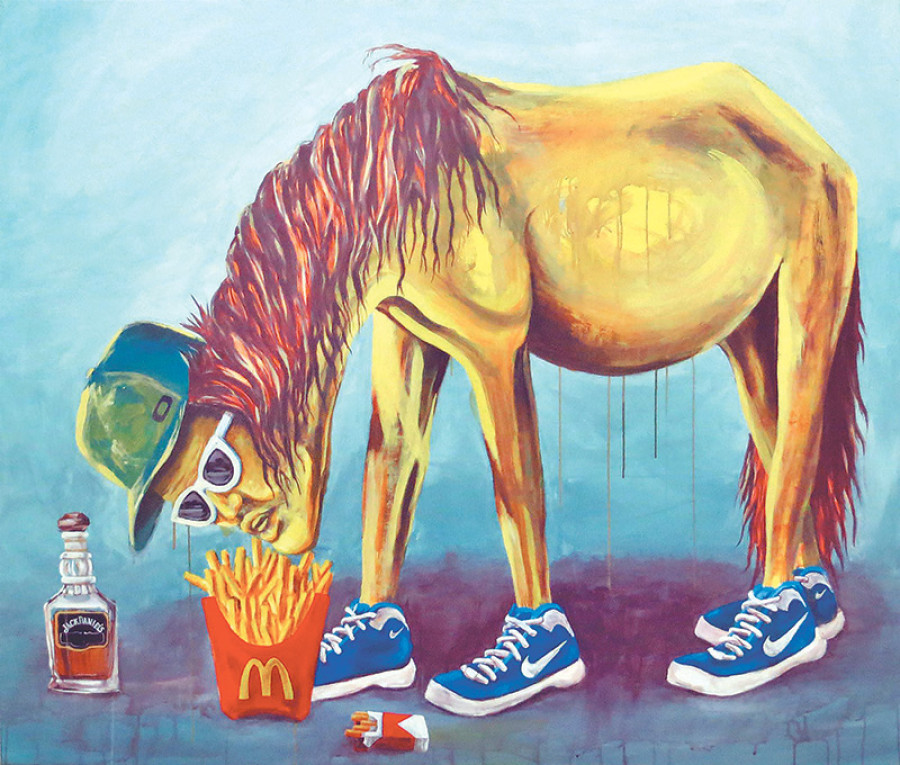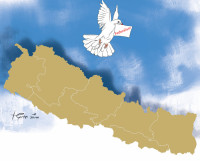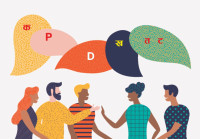Opinion
Animals and the human imagination
As we humans “evolve” we do not include animals in our spiritual fulfilment any more
Maneka Sanjay Gandhi
Man has always envied the powers of animals. His natural instinct was to complete himself in mythology with animal powers and become a superbeing. Angels, fairies, the Greek Drakaina, Mothmen, Seraphs, the Norse Valkyries, the winged genies of Assyria, the Vanth of Etruscan mythology who guide people to the underworld after death, the Chayot of Judaism, are all humans with wings. Mythology and folklore is full of animal-human hybrids. Most of these have been given divine status—whether of god, or villain, or trickster. In Christian art the devil is depicted with a human body, horns of a goat and a ram, goat’s fur and ears, nose and canine teeth of a pig. In ancient Mesopotamia, Pazuzu the king of demons, the southwest wind, bringer of storms and drought, has the body of a man, the head of a lion or dog, the talons of an eagle, two pairs of wings, and a scorpion’s tail. (But though Pazuzu is an evil spirit, he drives and frightens away other evil spirits, protecting humans against plagues and misfortunes).
Age old hybrids
Human hybrids appear in million-year old cave paintings.
In India the most famous man-animal combination is Ganesha. But, unlike other cultures, our mythology does not normally mix animals with men in order to worship them. The beauty of the pre-Hindu and Hindu mythology is that it confers divine status on the animals themselves—Kurma the tortoise, Matsya the fish, Garuda the eagle, Jambavan the bear, Kamadhenu the cow (who in later mythology is given a human head, body of a cow, and the wings and tail of a peacock), Nagas like Sesha who can change into humans at will like Balrama. In the Puranas, Sesha was a human ascetic. Brahma, pleased with his worship, entrusted him with the duty of carrying the world. Sesha changed into a serpent, entered into a hole in the Earth, and slithered to the bottom where he then loaded the Earth onto his head.
In the other mythologies, specially the Greek, Roman, Egyptian, Mesopotamian, Chinese and Japanese, the fusion of man-animal makes the being divine.
Pan is a deity in Greek mythology. He has the torso of a human and the hindquarters, legs and horns of a goat. He is the god of the wild, fields, groves, shepherds and flocks, nature and rustic music. He stands for fertility and the season of spring. The word panic comes from him. When disturbed he would shout and scare all. When the giants called the Titans, attacked the abode of the Greek gods, Olympus, Pan frightened the attackers away. The other word that comes from him is “companion”—and that is indicative, for me, of a paradise in which man and animal are friends.
Across cultures
Mermaids, half human and half fish are in every mythology but each culture has its own twists. Jengu is a beautiful water spirit of the Cameroon with a human upper body, a fish tail, long hair and gapped teeth that brings good fortune and healing to those who worship her. Sirena and Sireno are mermaids/mermen, from Philippine folklore, who guard the water. The Sirena have enchanting voices that hypnotises sailors and fishermen causing shipwrecks. Dagon is a Merman worshipped in Mesopotamia and Assyria as a fertility God. Cecaelia is a female half human, half octopus who lives in Lake Yaju, Japan and is a Sea Witch. The Cook Islands have a god called Avatea whose right half is that of a man and the left half of a fish. He is the father of gods and men. His eyes are the sun and moon and he is the god of light.
The Harpy is a Greco-Roman mythological creature with the lower body, wings and claws of a bird and the chest and head of a woman. They are associated with the wind and the underworld and are sent to take those humans away who are unwilling to die. Lilitus are Greek women with bird legs and wings, demons who work subtly to destroy society by leading mortals into sinful acts.
The Russian Alkonost, with the head of a woman and the body of a bird, makes such beautiful sounds that hearers forget all that they know and don’t want anything more ever again. She lives in the underworld with her counterpart the Sirin. The Alkonost lays her eggs on a beach and rolls them into the sea. When they hatch, a thunderstorm sets in and the sea becomes so rough that it becomes impossible to traverse. The Sirins are half-owl, half-human creatures. They sing to the saints foretelling future joys. Humans found them dangerous, as men, who heard them would forget everything, follow them and ultimately die. People would attempt to save themselves from Sirins by making loud noises to scare the birds off. In Persia the Sirins symbolised eternal joy and heavenly happiness. The Gamayun is also a Russian woman with the body of a bird. She is prophetic and a symbol of wisdom and knowledge.The Jatakas describe the Kinnaras as half human, half bird, fond of music and song with the female beating a drum and male playing on lute. They go on in later mythology to be celestial musicians and protectors of humans.
A divine creature of Japanese Buddhist mythology, with the head of a bird and the torso of a human based on the Hindu mythology of Garuda, the Karura is enormous, fire-breathing, and feeds on dragons/serpents who are non-Buddhist. Horus the falcon-headed is one of the most significant ancient Egyptian deities. Horus served many functions, most notably being a god of the sky, war and hunting.
Another creature that straddles many cultures is the half human-half horse. The Anggitay, a Philippine female with the upper body of a human with the lower body of a horse, smells out gems. The Greek Centaur, and his predecessor the Ipotane, have a mystical, ancient energy that reaches the desired outcome for their keeper. In Hinduism, Lord Hayagriva is worshipped as the god of knowledge with a human body and a horse’s head, brilliant white in colour, with white garments and seated on a white lotus. Symbolically, the divinity represents the triumph of pure knowledge over the demonic forces of passion and darkness. Probable origins about the worship of Hayagriva go back to 2,000 BC, when Indo-Aryan people worshipped the horse for its speed, strength, intelligence.There are so many more. The tragedy is that, as we “evolve” we do not include animals in our spiritual fulfilment any more. There are no religions and cults any more that embrace all of Earthkind.
To join the animal welfare movement contact [email protected], www.peopleforanimalsindia.org




 20.12°C Kathmandu
20.12°C Kathmandu


.jpg&w=200&height=120)





%20(1).jpg&w=300&height=200)

